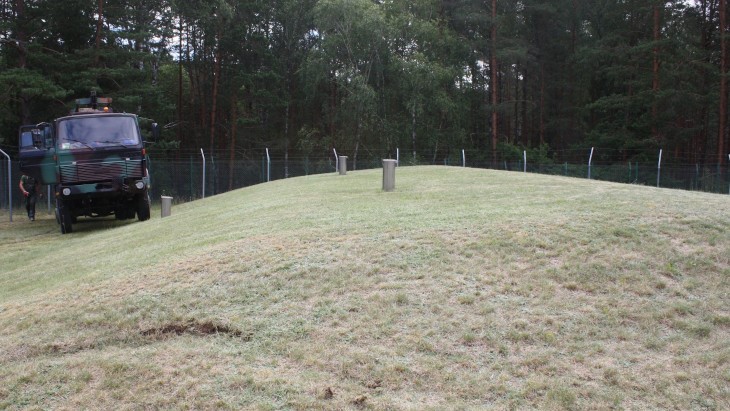Lithuania to tackle Soviet-era waste store
Lithuania is to demolish the outdated Maišiagala radioactive waste storage facility and permanently dispose of the waste it holds. A tender for buildings and equipment for the project has been launched.

Maišiagala lies about 40 kilometres northwest of the Lithuanian capital, Vilnius (Image: Ignalina NPP)
"Given the importance of the project, its implementation is given high priority," said Audrius Kamienas, the General Director of Ignalina NPP, the company decommissioning the power plant and related facilities in Lithuania.
The four RBMK reactors at Ignalina previously generated some 70% of the country's electricity. Lithuania agreed to shut down Ignalina units 1 and 2 as a condition of its accession to the European Union. Unit 1 was shut down in December 2004 and unit 2 in December 2009.
The contractor selected by Ignalina NPP will install a temporary building and cover for Maišiagala, complete with power supply, ventilation and radiation monitoring. It will also provide equipment and commissioning services. Ignalina NPP received licences for the decommissioning work from the State Nuclear Power Safety Inspectorate (VATESI) in 2020 and the company hopes to complete the project by mid-2023.
Maišiagala is a concrete vault for the storage of radioactive waste built three metres below ground in 1963. Being a Soviet-era facility, it accepted a range of wastes from industry, research and medicine from the Kaliningrad and Grodno regions as well as Lithuania until 1989. The wastes inside are unsorted and span from very low-level radioactive waste to intermediate-level, and also contain both short and long-lived radioactive materials.
Maišiagala was taken out of operation when it was deemed not to meet standards of the time. Almost half of its volume was unused and backfilled with sand. The facility as a whole is covered with bitumen, asphalt and a thick layer of earth as well as waterproof barriers which were installed in 2006.
Ignalina NPP notes that during monitoring of Maišiagala "some tritium enters the water of boreholes drilled near the storage facility" although "the amount of tritium did not exceed the permissible levels" and "does not enter the nearest water bodies or wells of the population." However, this does show "the need to strengthen the safety barriers of the storage facility."
Modern standards for disposal of radioactive waste demand that each kind of waste is packaged in containers according to its activity and longevity and that there is a separate disposal facility for each type. Reaching this standard for Maišiagala's wastes is the goal of a EUR4 million (USD4.5 million) project financed by the Cohesion Fund of the European Union Structural Funds.
The waste from Maišiagala will be stored at the Ignalina power plant site, where it can easily be accommodated by new and much larger facilities supporting the decommissioning of the power plant.
Ignalina NPP noted that this was the second time it had run this tender. The first time, in February 2021, it evaluated responses but did not make a selection.
Researched and written by World Nuclear News
- China Institute of Atomic Energy
- Nuclear Power Institute of China
- Southwestern Institute of Physics
- China Nuclear Power Operation Technology Corporation, Ltd.
- China Nuclear Power Engineering Co., Ltd.
- China Institute for Radiation Protection
- Beijing Research Institute of Uranium Geology (BRIUG)
- China Institute of Nuclear Industry Strategy (CINIS)
- China Nuclear Mining Science and Technology Corporation


